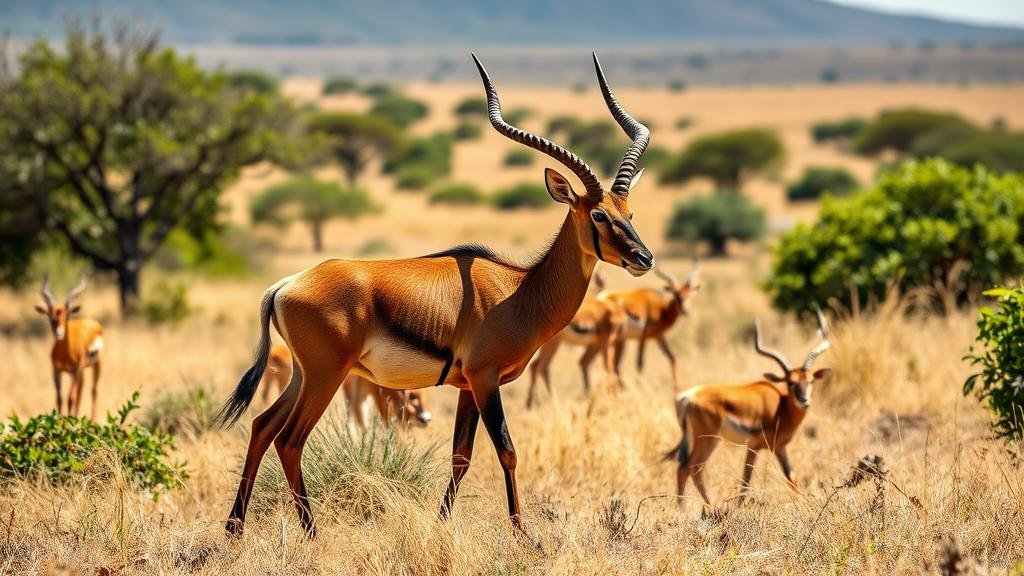Tracking elusive sable antelope through the open savannas of Angola.
Tracking Elusive Sable Antelope Through the Open Savannas of Angola
The sable antelope, recognized for its striking black coat and impressive curved horns, is one of the most sought-after species in the African savanna ecosystem. Tracking these elusive creatures through the vast landscapes of Angola offers not just a thrilling adventure but also a deeper understanding of the complexities of wildlife conservation. With Angolas rich biodiversity and unique geographical features, it becomes a prime location for both researchers and wildlife enthusiasts alike.
The Habitat of the Sable Antelope
The sable antelope is typically found in savanna habitats, where tree cover provides shade and grazing opportunities. Angola, located in Southern Africa, features sprawling plains, dense woodlands, and wetlands that create a mosaic of ecosystems suitable for the sable antelope. Key regions include:
- Kwango Province: Characterized by its rich vegetation and diverse wildlife populations.
- Namibe Desert: Offers a stark contrast, highlighting the adaptability of the sable to seek water in arid environments.
- Luando Great River: A vital water source that attracts various animal species, including sable antelope.
Understanding Their Behavior
Tracking sable antelope can be challenging due to their cunning nature and ability to blend in with their surroundings. These animals are elusive and primarily active during the cooler hours of the day, making dawn and dusk the best times for observation. r social structure, typically consisting of small herds led by a dominant male, also plays a critical role in their behavior and movement patterns.
Techniques for Tracking
When tracking sable antelope in Angola, several techniques can be employed to increase the chances of a successful sighting:
- Footprint Analysis: Identifying tracks can provide insight into the location and movement of a herd.
- Scat Identification: Fresh droppings can indicate recent activity in the area.
- Listening for Calls: Familiarizing oneself with the sounds of wildlife can lead to locating herds.
- Utilizing Technology: GPS collar tracking and camera traps help researchers monitor movements without direct interference.
The Conservation Challenge
The sable antelope has faced significant threats, primarily due to habitat loss, poaching, and human-wildlife conflict. According to the International Union for Conservation of Nature (IUCN), sable populations have declined in certain areas, necessitating concerted conservation efforts. In Angola, initiatives include:
- Protected Areas: Establishing national parks, such as the Kissama National Park, to safeguard habitats.
- Community Engagement: Involving local communities in conservation efforts to foster a sense of stewardship.
- Wildlife Corridors: Creating pathways for safe animal movement between fragmented habitats.
Real-World Applications of Tracking
Tracking sable antelope has practical applications beyond just observation. It provides valuable data that can influence policy decisions, aid in population monitoring, and enhance habitat restoration efforts. For example, researchers can analyze movement patterns to identify critical habitats necessary for breeding and feeding. Also, understanding their ecology aids in predicting responses to environmental changes, ultimately leading to more effective conservation strategies.
Conclusion and Actionable Takeaways
Tracking sable antelope through the open savannas of Angola is not just about the thrill of the chase; it is a vital component of conservation that impacts broader ecological health. Here are some actionable takeaways for enthusiasts and researchers:
- Prioritize eco-friendly tracking methods to minimize disturbance to wildlife.
- Engage with local communities to support conservation initiatives.
- Use data from tracking to advocate for protected areas and sustainable practices.
By understanding the behavior and habitat of the sable antelope, stakeholders can ensure these majestic creatures thrive in the wild, preserving them for generations to come.



